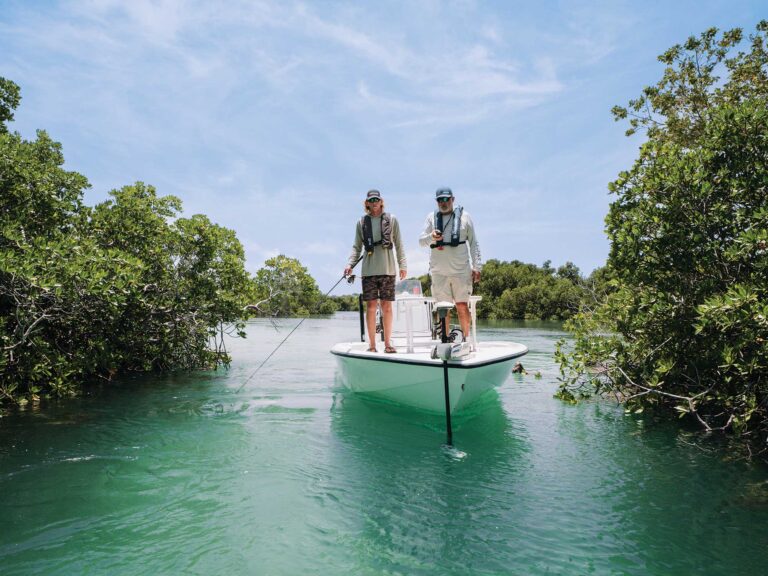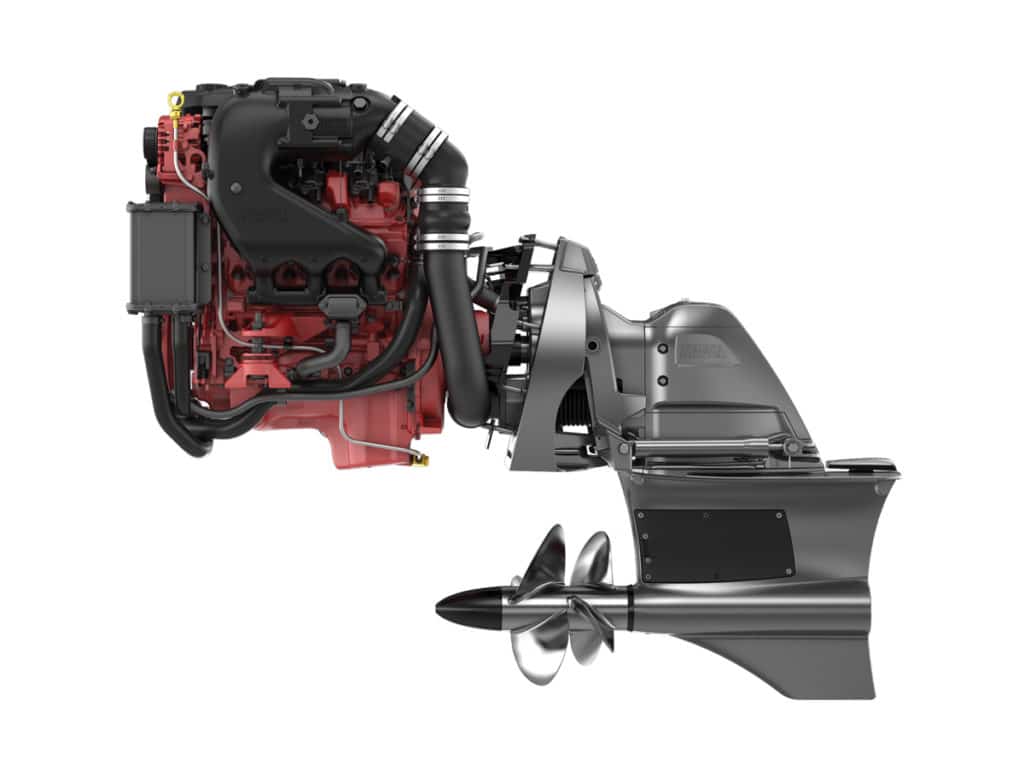
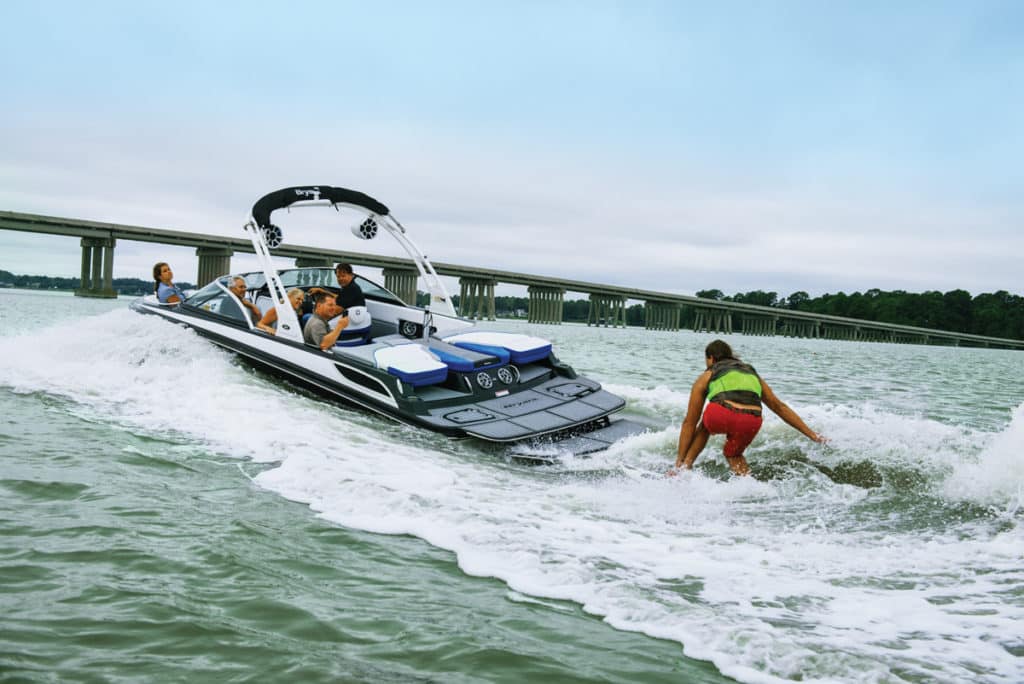
LOA: 23’3″
Beam: 8’6″
Draft (max): 2’8″ (with standard I/O; spec NA with Forward Drive)
Displacement (approx.): 3,530 lb.
Transom Deadrise: 19 degrees
Fuel Capacity: 49 gal.
Max Horsepower: 320 Price: Not available yet for Forward Drive How We Tested
Engine: 300 hp Volvo Penta V8-300C gasoline sterndrive
Drive/Prop: Volvo Penta Forward Drive prototype/K4 propset
Gear Ratio: 1.95:1
Fuel Load: 45 gal.
Crew Weight: 400 lb.
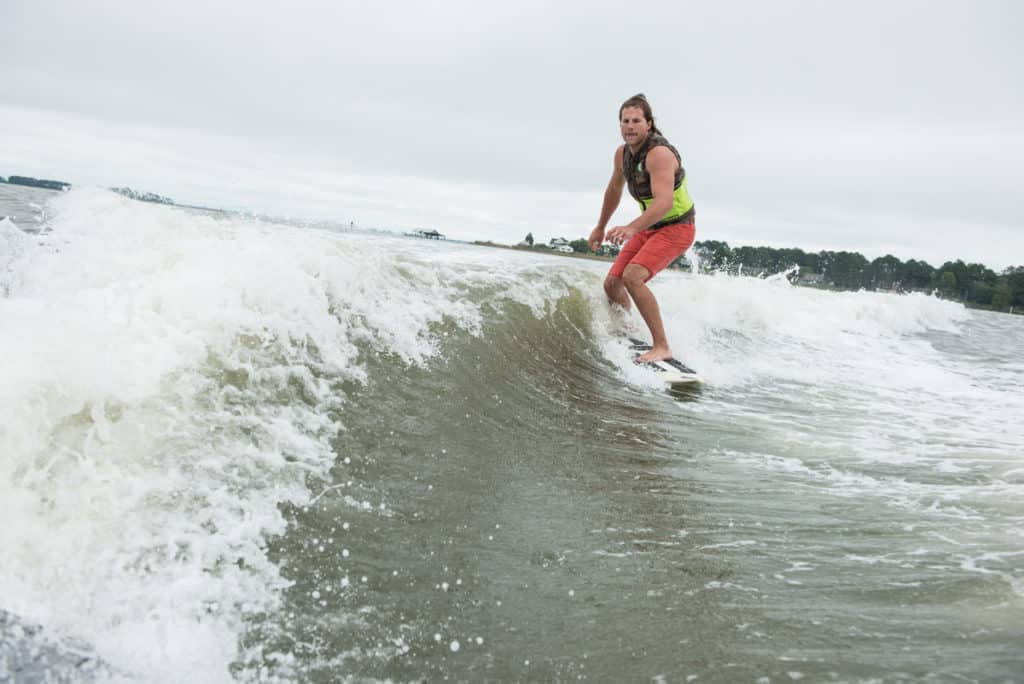
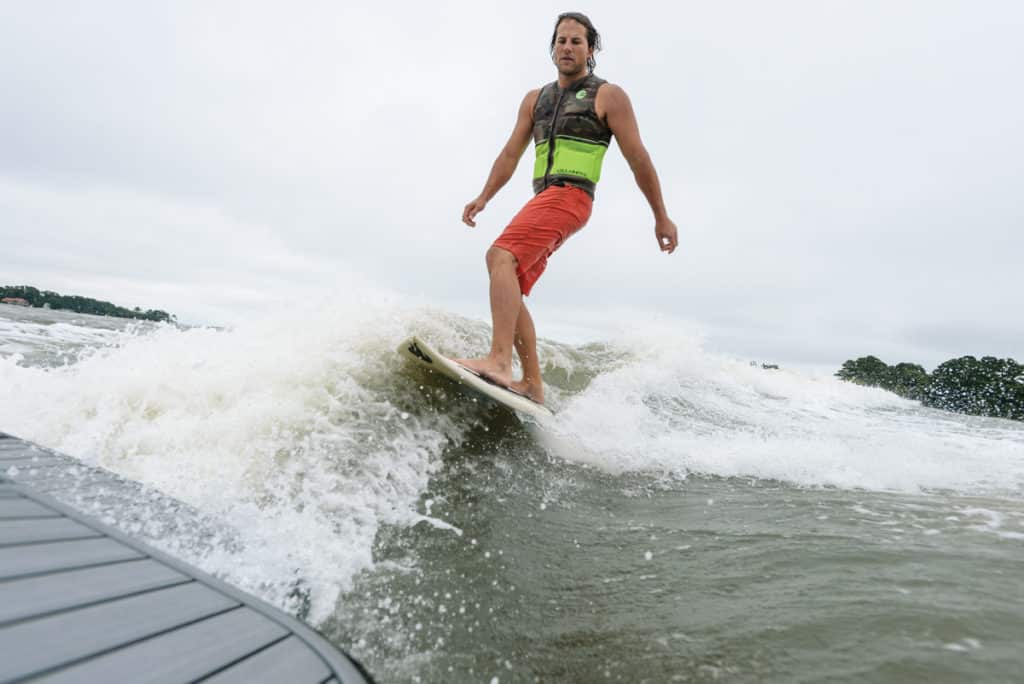
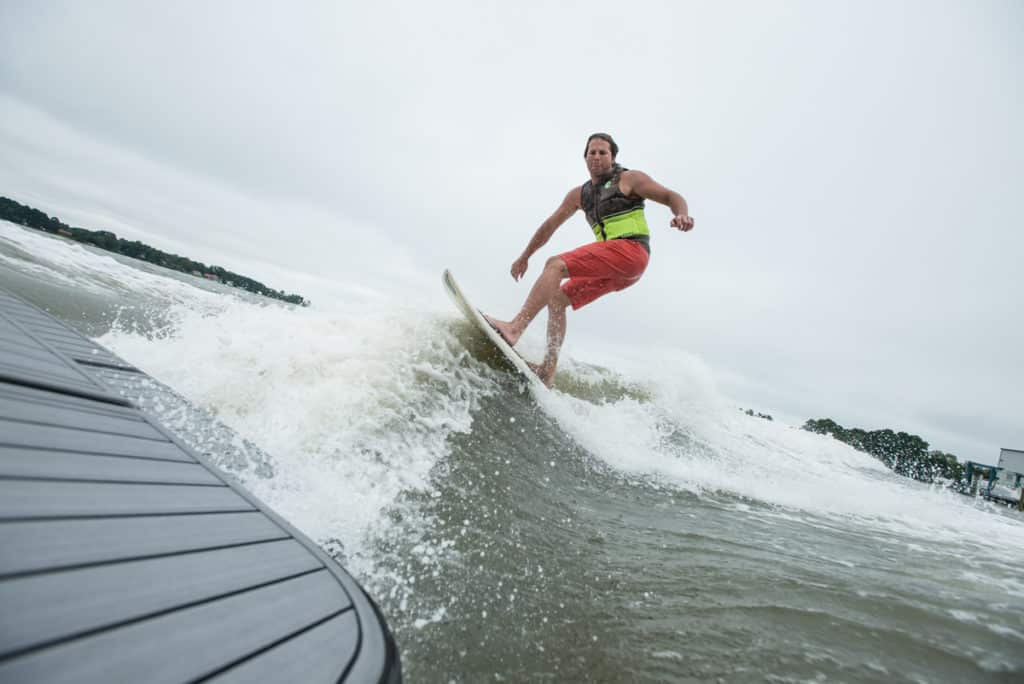
Poke around on the Internet and you can find black-and-white newsreel footage from the early 1960s of longboard riders surfing behind boats. The late water-ski and wakeboard innovator Herb O’Brien and his brother, Ed, surfed behind the family Chris-Craft on Lake Sammamish, Washington, in 1954 on a small board designed by his father, a Boeing engineer. During his misspent youth, our own editor-in-chief recalls surfing Long Island waters on the monster wake thrown by a borrowed Pacemaker.
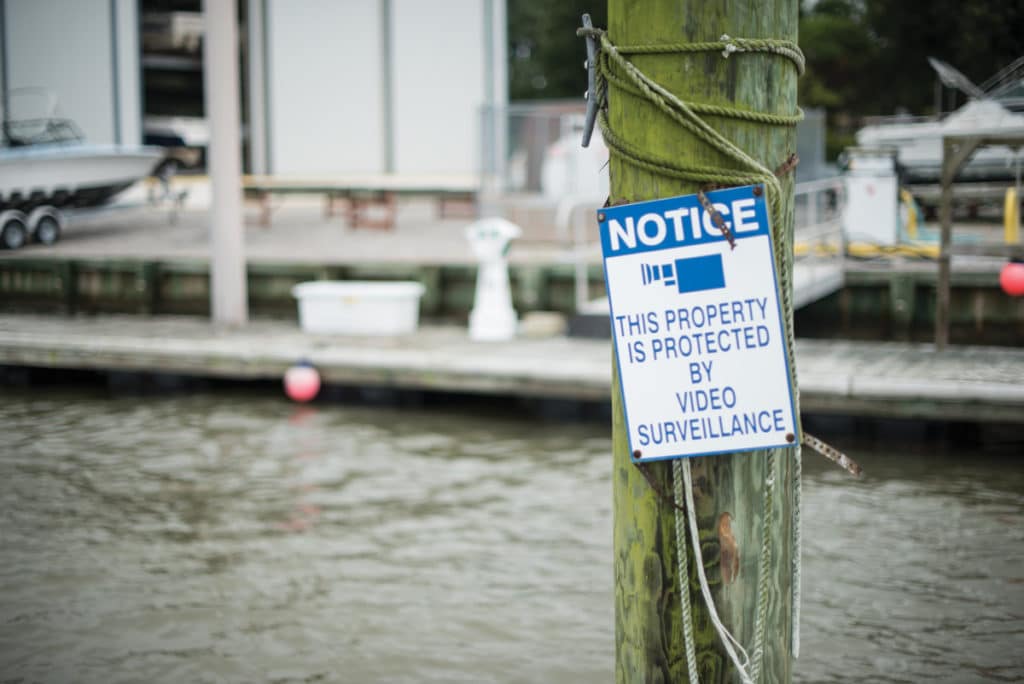
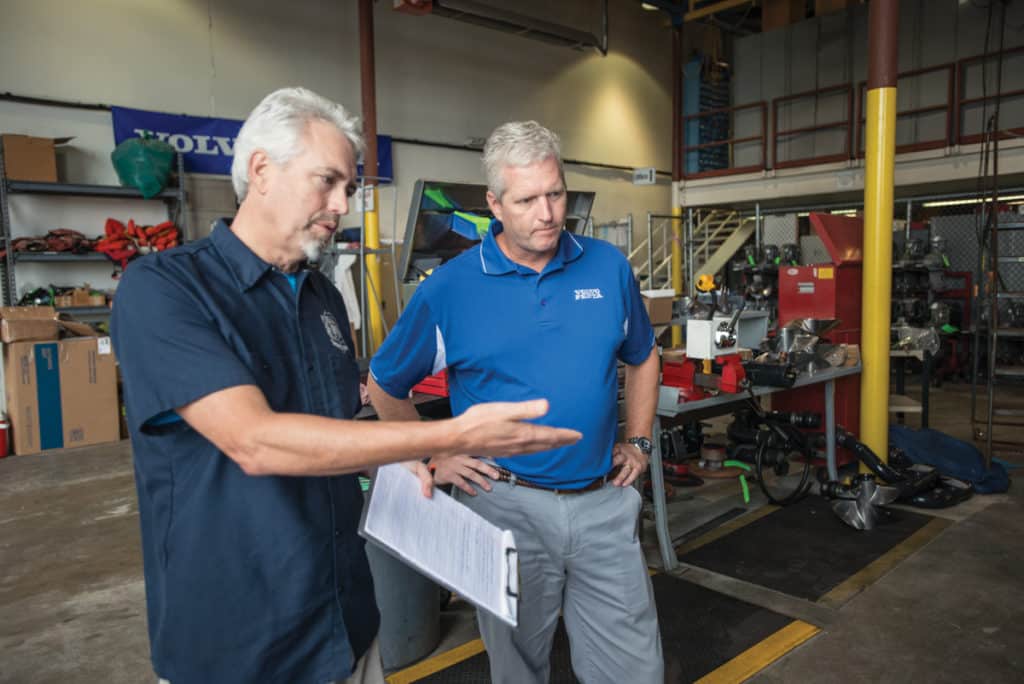
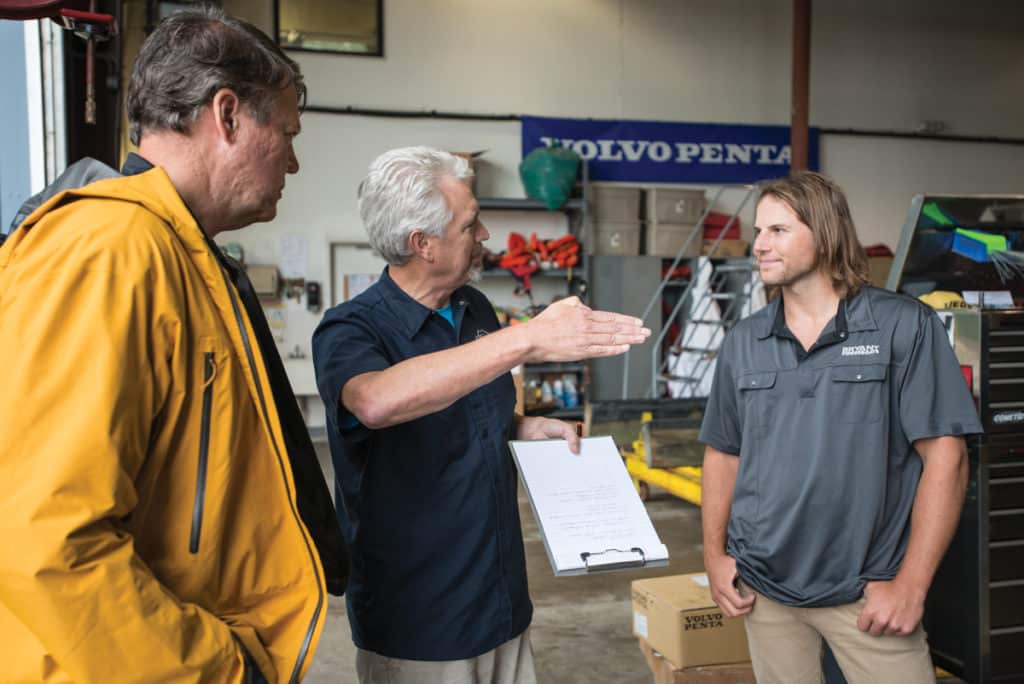
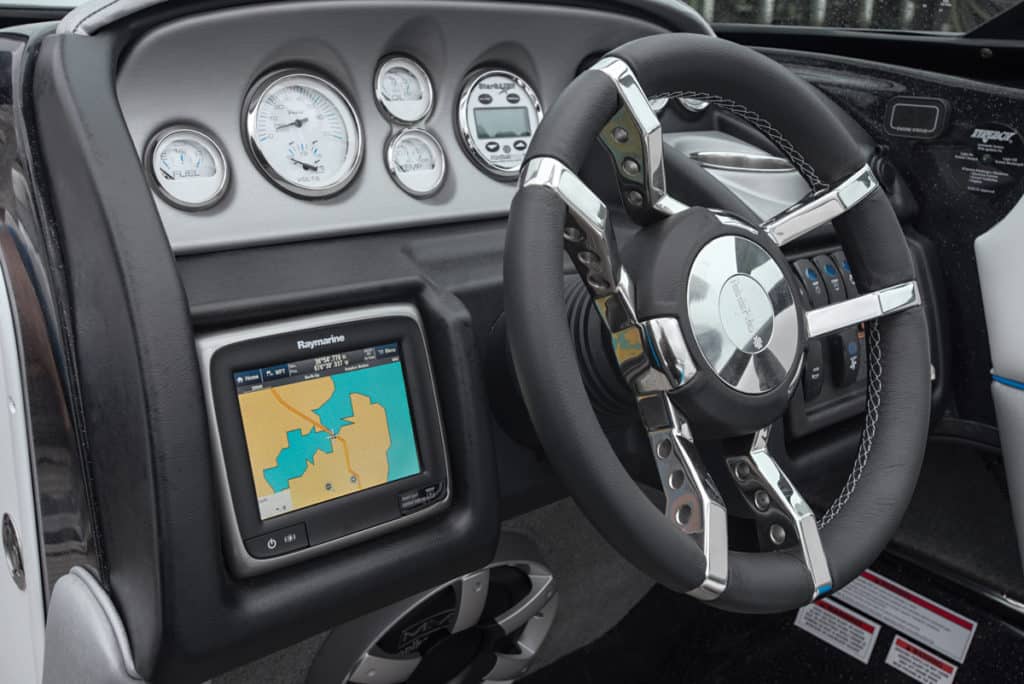
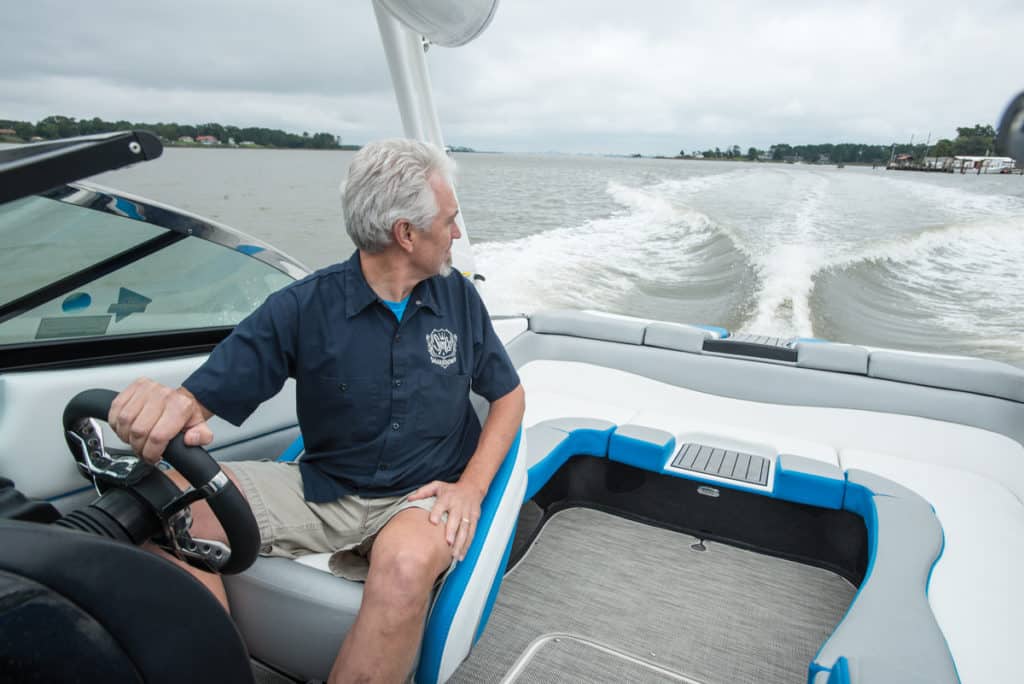
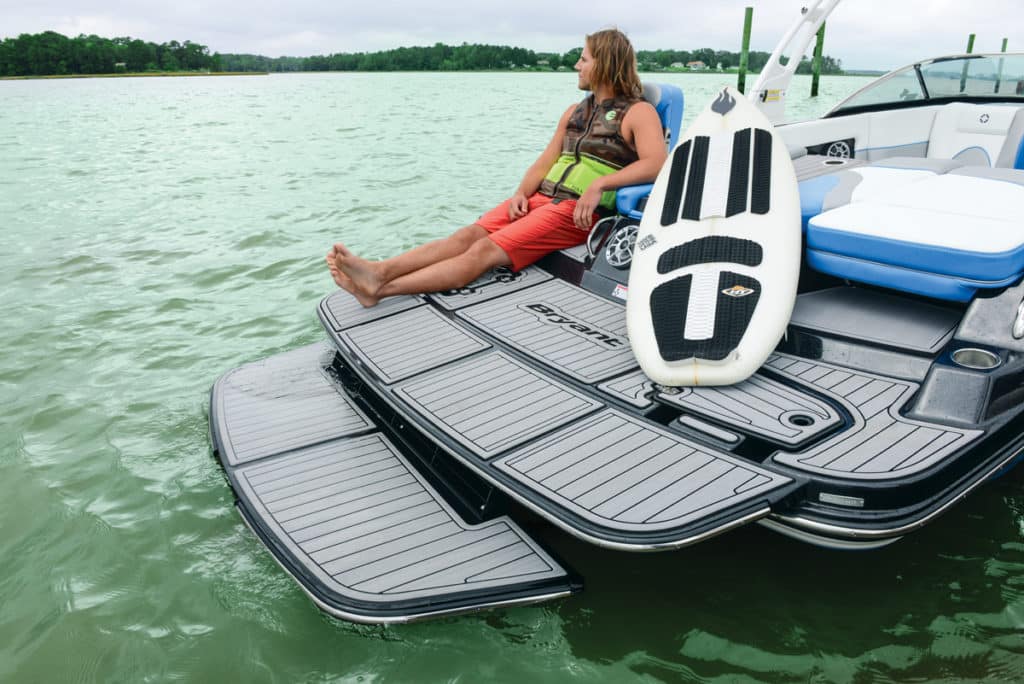
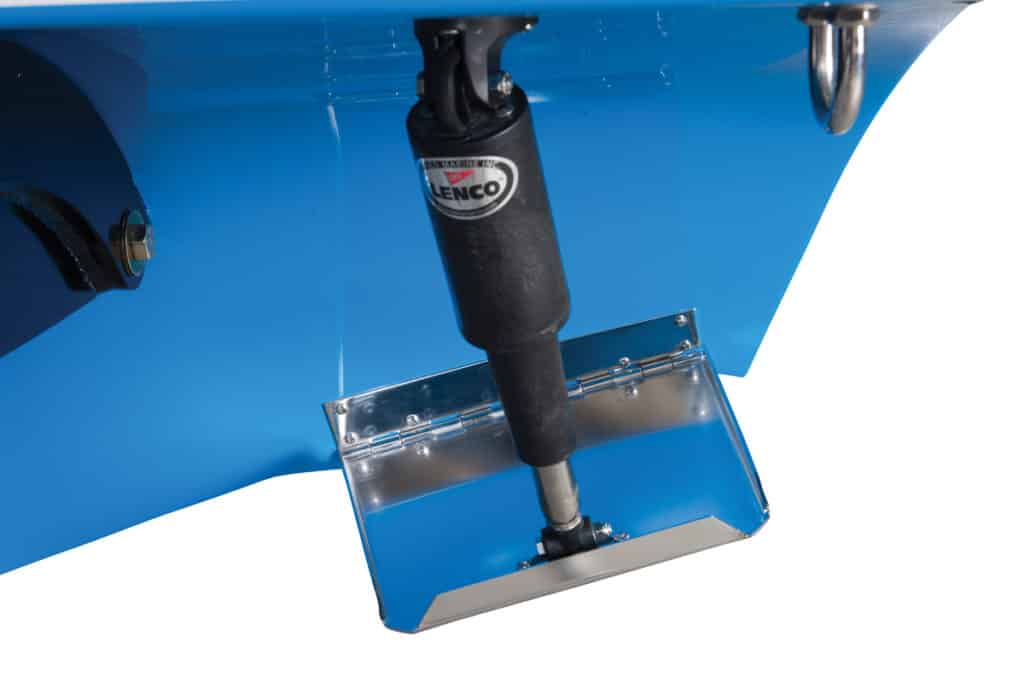
Let’s go surfin’ now.
Everybody’s learning how.
Come on and safari with me. … “Surfin’ Safari,” The Beach Boys, 1962
You know the tune. Now try singing it like a sea chantey because marine engine maker Volvo Penta is about to head out on a surfin’ safari. And thanks to an invite by Bryant Boats, Boating got to throw a board in the woody, come along, and share the news with you.
The Green Room
We were granted official clout, so we didn’t have to scale the razor wire surrounding the top-secret Volvo Penta Test Center on Chesapeake Bay to see a prototype of the Forward Drive, a new forward-facing dual-prop drive designed expressly for wakesurfing. The pulling, or “tractor,” props of the Forward Drive are tucked under the boat and about 27 inches farther forward than the props of a Duoprop sterndrive, and thus 27 inches farther away from a wakesurfer riding the curl. Suddenly wakesurfing, previously the privilege of those with the significant scratch to throw down for an inboard tow boat, may be an option for the bourgeoisie boating family in a new generation of surf-ready runabouts powered by the patented Forward Drive. Surf’s up!
The Forward Drive was developed with the input of boatbuilders like Bryant Boats, which invited us to demo the prototype on its 233X model at the Volvo Penta facility. According to Volvo Penta, boatbuilders Regal, Cobalt, Four Winns, Monterey and Chaparral have also participated in Forward Drive testing and may offer it on new or modified boat models this year. Now, just as bolting a tower to the gunwales of a bowrider doesn’t exactly make it a pro-tour wakeboard boat, the Forward Drive and some ballast may not turn that same boat into a primo surf sled. But I bet it could be good enough for the weekend duffer and his kids to have a blast learning to surf — without blowing the college fund.
Check out what boatbuilder’s using Forward Drive have to say!
Wake’s Up!
Over the years, the wakesurf premise has stayed the same — get up on the board while holding a short ski line, find the sweet spot in the wake, and toss the line back into the boat. At the right boat speed, the wake has enough energy to keep board and rider moving forward. Fresh interest in wakesurfing started eight or 10 years ago, enabled by the development of the wakeboarding tow boat, an inboard with water ballast designed to make a very large wake. Slow that boat down to 10 or 12 mph, and a wake with surfable energy is created right off the transom. With hints of a recession looming and wakeboarding perhaps peaking in popularity, the tow-sports industry threw product and marketing energy behind wakesurfing, hoping it could be The Next Big Thing. Dedicated wakesurfing boards were developed, and boatbuilders started adding trim tabs and other details to tow boats to enhance the shape of the wake at surf speed. A dialed-in wakesurfer can ride the wave until the boat runs out of gas, and surfing doesn’t hurt when you fall off, knee ligaments stay intact, and a buddy can film you from the boat.
See Boating’s Test Data of the Bryant 223X Surf Edition
Looks like big fun if you have an inboard tow boat with the prop located well under the hull. Surfing 3 feet behind a boat powered by a sterndrive or an outboard, however, invites catastrophe, some say, because of the close proximity of whirling propeller to surf-rider appendages. And so the inboard/outboard crowd has been dissuaded from the surf party. The Forward Drive allows builders to create a runabout that’s not just a dedicated wakesurfer.
The Forward Drive addresses the prop location issue. It has a lower-unit design that evolves from the forward-facing Volvo Penta IPS inboard drive, a system that just celebrated its 10th anniversary. It’s a little smaller than the IPS 1, and it’s cast in aluminum rather than bronze.
For wakesurfers, the Forward Drive offers two key benefits. The props are moved under the boat to a position close to the location of an inboard prop, at a respectable distance from the surfer just behind the boat. The new drive also dumps all of its exhaust underwater, unlike most inboards and even the Duoprop, which vents some exhaust at surface level through the anti-ventilation plate. This eliminates exhaust fumes from the surfer’s environment directly behind the boat.
Check Out The Special Forward Drive Website
Unlike an inboard, the Forward Drive is trimmable and turnable and provides directional thrust for steering, performance and efficiency, but here’s where we “bump” into a limitation of this design — the Forward Drive cannot be trimmed above the boat bottom. In fact, at max trim the drive is about 12 inches below the bottom of the boat. It incorporates two proven sterndrive features to protect against damage due to an underwater collision — hydraulic kick-up and a “drive saver,” but a boat equipped with Forward Drive is always going to draw more water than a sterndrive. Like many inboard-powered boats, it will likely require a trailer that carries the boat higher above the ground.
Volvo intends to offer the Forward Drive with gasoline engines from 200 to 430 hp but expects the prime application will be from 300 to 430 hp. Specific props have been designed for the drive, to be designated the K Series propsets. Volvo said the Forward Drive will cost about 10 percent more than a traditional sterndrive costs.
No Replacement for Displacement
As mentioned, the Forward Drive I got to sample was very much a prototype. We started our demo in surf mode, with the Bryant 233X laden with 1,700 pounds of water ballast plus some lead and six people. Ben Dorton, the 25-year-old Bryant brand manager, was our designated surfer. Dorton grew up during the wakeboard boom, when his dad, John, was the president of MasterCraft. John Dorton acquired controlling interest in Bryant in 2012, and Ben is a partner in the venture. Ben won a national championship with the University of Tennessee wakeboard team in 2013, and when he picked me up at the airport, the back seat of his F-150 held a wakeboard, a surfboard and a knee brace, a typical collection of gear for a wake-sports athlete. I asked Dorton what defined a good surf wake.
“At surf speed the boat is not on plane, and rather than creating a wake that dissipates as it spreads outward, the wake swells and rolls over itself, just like a wave on the ocean,” Dorton said. “The dual props of the Forward Drive eliminate the list caused by prop torque in an inboard, so the wake is symmetrical, and you can ride either side without ballast or tab adjustment.”
A big wake is all about displacement, and with 19 degrees of deadrise at the transom, the Bryant starts out making a bigger hole in the water than a flat-bottom inboard tow boat’s. While the angle of the inboard prop shaft is always lifting that hull, the Forward Drive can be trimmed to press the stern deeper into the water.
“I think with Forward Drive we can ultimately make a surf wake that’s as good as the smaller inboard boats’,” Dorton said. “The goal is to offer a boat that you can surf behind confidently, with a reliable wake that’s lots of fun.”
To gauge its performance, we ditched the ballast and drove the Bryant like the runabout it is. Volvo said the Forward Drive will offer speed and economy comparable to a Duoprop sterndrive’s, with other advantages. Because the props are deep and away from exhaust, reverse thrust is outstanding, and it’s impossible to blow out in a turn. In fact, the Bryant was able to cut hard 180-degree turns like an inboard does.
To enhance the surf wake of the 233X, Bryant has already modified the strakes and the trailing edge of the hull. The boat we ran was equipped with standard trim tabs, but Bryant will soon have new tabs formed to further enhance wake shape. The 233X is priced at $75,000 to $85,000, the premium end of the sterndrive market. The surfin’ safari could just be starting.








